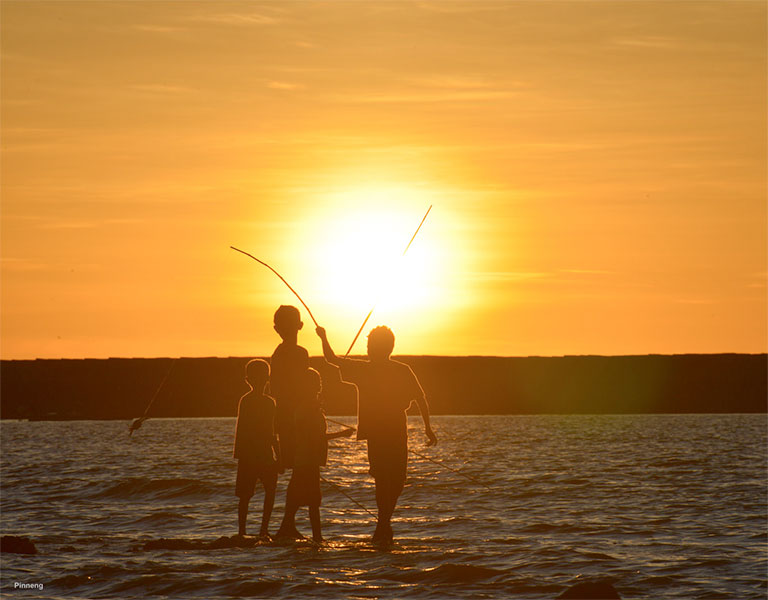The Arafura and Timor Seas (ATS) region is unique in terms of its ecology, geography and socio-political structure.
Shared by Australia, Indonesia, Papua New Guinea and Timor-Leste, this fertile corridor of tropical water traverses the North Australian Shelf Large Marine Ecosystem (LME), connecting the Pacific and Indian Oceans with the Coral Triangle.
This area provides the peoples of many nations with essential resources, while also stocking the world’s oceans with biodiversity.
The ATS region is home to a vast array of natural wonders:
In addition, the ATS is extremely rich in non-living natural resources, including oil and gas reserves.
Much of the marine life in ATS is under threat from a combination of overfishing, loss of habitat and the impacts of climate change. This underlines the urgent need for collective regional action and transboundary management of economically important fish species, critical habitats and marine megafauna.
5 PRIMARY ENVIRONMENTAL CONCERNS
Through a series of national and regional consultations during the first phase of the ATSEA Program (ATSEA-1), we have identified five primary environmental concerns:
UNSUSTAINABLE FISHERIES
A dramatic decline in coastal resources is being caused by illegal, unreported and unregulated fishing (IUU). Combined with unsustainable practices and fisheries bycatch, this issue is draining the ATS region of resources faster than they can be naturally replenished.
HABITAT DEGRADATION
Industrial expansion is having a major impact on the ATS ecosystem, while the clearing of mangroves for fuel wood is accelerating the destruction of vital coastal habitats.
POLLUTION
From both land and sea, the ATS region is being suffocated by pollution from human waste, sediments and oil spills. Coastal development in the region has led to increased sediment runoff into the ocean, along with land degradation and toxic waste from mining projects.
LOSS OF BIODIVERSITY
The combined impact of unsustainable harvesting, fisheries bycatch, habitat loss and climate change has led to a major decline – and in some cases loss – of biodiversity, including several key marine species.
IMPACTS OF CLIMATE CHANGE
The destruction currently unfolding in the ATS region is the result of fossil fuel-based global energy consumption, unregulated land use and unsustainable forestry on a global scale.
Urgent action is needed if we are to reverse these destructive trends and ensure the sustainable management of all living and non-living resources in the ATS region.

In 2006, the Arafura and Timor Seas Expert Forum (ATSEF) developed and submitted a bid to GEF, which came to be known as the Arafura and Timor Seas Ecosystem Action (ATSEA) Program. This was approved in 2007.
The initial phase of the ATSEA Program was officially launched in 2010. It created a multinational, intergovernmental forum composed of local leaders, regional government representatives, experts and conservationists, tasked with creating sustainable solutions for problems affecting coastal and marine resources in the region.
ATSEA-1 achieved the following results:
By creating the initial forum, formulating and implementing a regional SAP and then ensuring intergovernmental adoption, the first phase of ATSEA laid essential groundwork for the project; a foundation on which the second phase is set to build.
The second iteration of the ATSEA Program has been adapted to take regional collaboration and coordination in the ATS region a step further. This will be achieved through the endorsement and implementation of a 10-year vision for the Arafura-Timor Seas, known as the Strategic Action Programme (SAP).
The ATSEA-2 Project is made up of three main components:
Combined outcomes expected of the ATSEA-2 Project are:
Discover how each component of ATSEA-2 is working to achieve these objectives in the ATS region
ATSEA-2 is a Global Environment Facility (GEF)-funded programme, managed and executed under the United Nations Development Programme (UNDP). Partnerships in Environmental Management for the Seas of East Asia (PEMSEA) Resource Facility (PRF) is an implementing partner